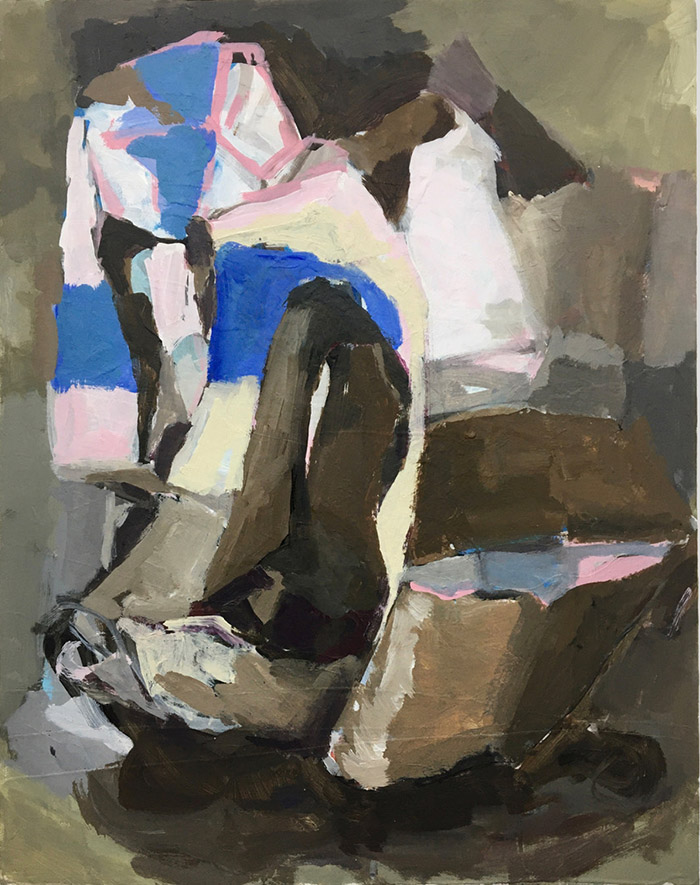All good art has at its core an essential moment of transmutation, a point at which the object and the idea which informs it fully coalesce. The essence of the object—whether it’s a painting or a bag sculpture—versus the impulse to create it in the first place are the central questions that inform Helen Chung’s artistic process, and her recent solo exhibition at Rio Hondo College attests to these strange and often magical correlations.
Working across disciplines is rarely easy, and we as viewers are constantly seeking visual threads that might lead us to some essential meaning. Neither Chung’s paintings nor sculptures correlate directly to her source material—shopping bags from high-end retailers that initially transfer expensive baubles, then are almost immediately downgraded to toting one’s dry-cleaning, then eventually to their sad end as rubbish themselves. The artist has exhumed what were essentially status chits designed to signal consumer spending ability and given these former upmarket signifiers a new life as art objects, as paintings and sculpture elevated to the gallery, a sic transit gloria mundi of market self-indulgence. The artist’s subjects are revived as specimens of desire and loss through their spendy names—Prada Resort, D&G Sport, yet posers manage to sneak in: Disney Hall, Victoria’s Secret.
Her works, however, are not true-to-form representations of the literal objects but suggest a more nuanced conception of what an object can be, to be examined from all angles simultaneously rather than affixing a specific meaning to a more specific interpretation.

Helen Chung, Marnie Sweater, 2021. Courtesy Rio Hondo College.
This approach allows that one side of an object can represent its entirety, at least in 2D space, yet in each of these works there is a transformation that occurs. For example, in the sculpture, Ma Favarite (2018), the red-and-brown bag begins to suggest a human face when considering its corresponding painting Laughing Skull (2021). Again, the works are not meant to correlate to a specific narrative, but instead emphasize the shifting focus that happens when looking closely at the sculptures, a strangely solipsistic experience wherein the object we are viewing transforms depending on the angle in which we are seeing it, hence her title for the exhibition, “Undique,” a Latin word meaning allover or from every point of view.
Ultimately, Chung’s working process appears to have no true beginning and no obvious end as each of the pieces appears fluid and in constant motion, replicating the process by which these bags were created in the first place. Considering these works together, one realizes that there are multiple translations, all of which are equally valid and enlightening. One longs to make some sense of them, yet as soon as meaning comes into focus, it dissolves yet again.


